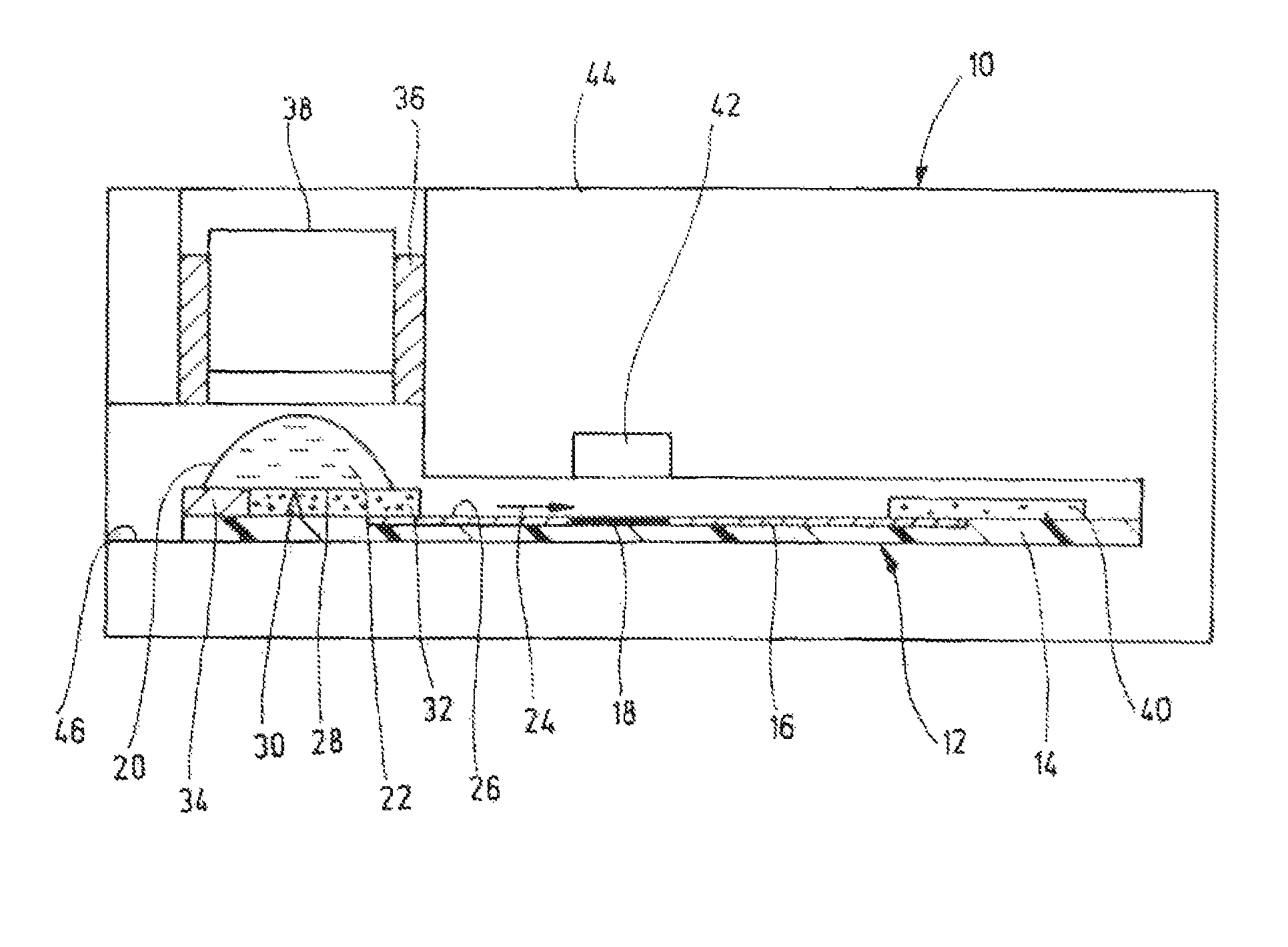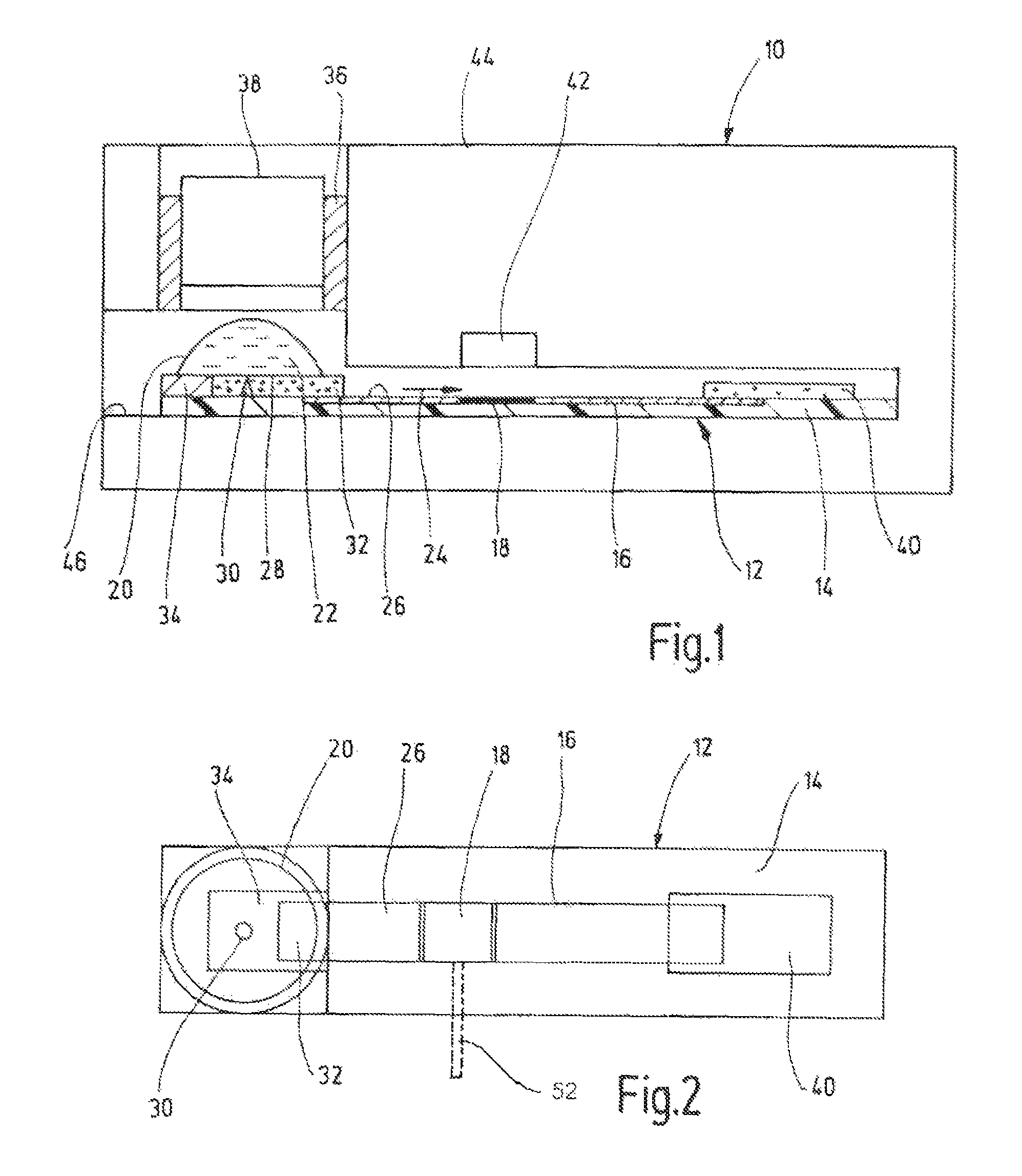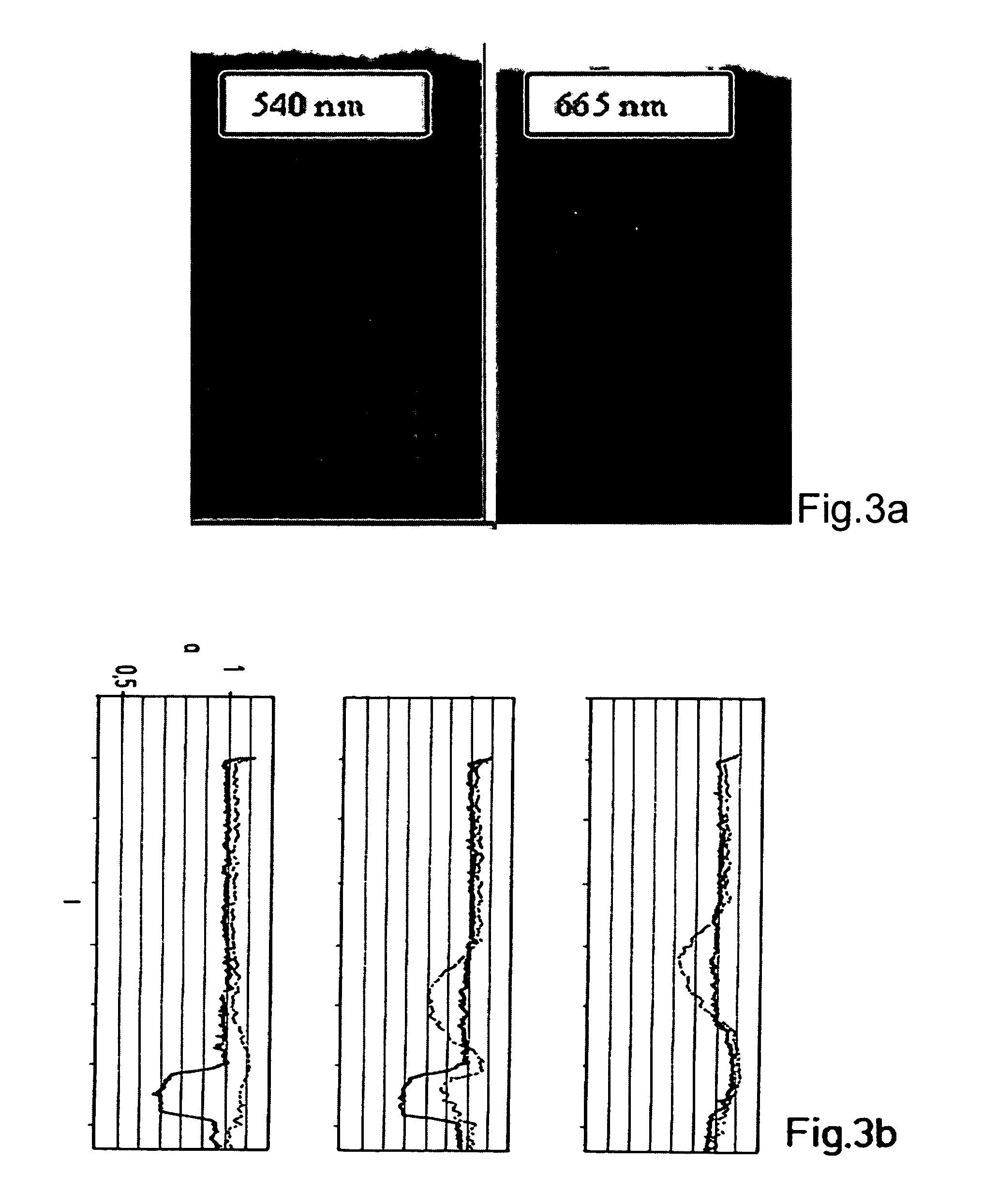Biochemical assay
a biochemical and assay technology, applied in the field of biochemical assays, can solve the problems of reagents and chemistry integration that are more expensive and laborious, and achieve the effect of high partition coefficien
- Summary
- Abstract
- Description
- Claims
- Application Information
AI Technical Summary
Benefits of technology
Problems solved by technology
Method used
Image
Examples
example 1
[0039]In one working example (FIG. 3) a commercial aluminium oxide TLC plate was used as substrate, phenylboronic acid linked to an organic dye of low-polarity (max. absorbance at ca. 650 nm, emission at ca. 670 nm) as conjugate reagent (MW<700 Dalton), and a buffer phosphate / EDTA at pH typically ≧7, most typically ≧9,containing approximately 1% tetradecyltrimethylammonium bromide (TTAB), as mobile phase, TTAB was used also as haemolysing reagent.
[0040]Two controls were run in parallel with the HbA1c test (blood sample containing 10% glycated haemoglobin plus non-immobilized conjugate) in the center, namely blood sample without conjugate on the left, and conjugate without blood on the right. The two images in FIG. 3a were taken at different wavelengths, i.e., 540 nm and 665 nm, by using a CCD camera as detector and a set of filters for the illumination source and the camera objective. The three absorbance traces showing relative absorbance a over separation length d in FIG. 3b refer...
PUM
| Property | Measurement | Unit |
|---|---|---|
| a wavelength | aaaaa | aaaaa |
| wavelengths | aaaaa | aaaaa |
| wavelengths | aaaaa | aaaaa |
Abstract
Description
Claims
Application Information
 Login to View More
Login to View More - R&D
- Intellectual Property
- Life Sciences
- Materials
- Tech Scout
- Unparalleled Data Quality
- Higher Quality Content
- 60% Fewer Hallucinations
Browse by: Latest US Patents, China's latest patents, Technical Efficacy Thesaurus, Application Domain, Technology Topic, Popular Technical Reports.
© 2025 PatSnap. All rights reserved.Legal|Privacy policy|Modern Slavery Act Transparency Statement|Sitemap|About US| Contact US: help@patsnap.com



